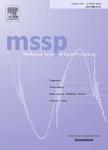版权所有:内蒙古大学图书馆 技术提供:维普资讯• 智图
内蒙古自治区呼和浩特市赛罕区大学西街235号 邮编: 010021

作者机构:Univ Cent Florida Dept Civil Environm & Construct Engn Orlando FL 32816 USA
出 版 物:《MECHANICAL SYSTEMS AND SIGNAL PROCESSING》 (机械系统与信号处理)
年 卷 期:2009年第23卷第7期
页 面:2192-2204页
核心收录:
主 题:Structural Health Monitoring Damage detection Time series modeling Statistical pattern recognition Outlier detection Dynamics
摘 要:Statistical pattern recognition methodologies have gained considerable attention for Structural Health Monitoring (SHM) applications to detect changes in a structure (e.g. damage). For most of such applications, outlier analysis of the damage sensitive features obtained from the SHM data is used to detect the changes in the structure. There are a number of different approaches used by different research groups and it is widely accepted that success of a certain methodology may depend on the structure and/or structural change to be identified. Therefore, it is very important that promising methodologies are verified by using different test structures and damage cases. The main objective of this study is to investigate statistical pattern recognition methods in the context of SHM using different laboratory structures. Time series modeling, i.e. auto-regressive models, is used in conjunction with Mahalanobis distance-based outlier detection algorithms to identify different types of structural changes on different test structures. Similar approaches were reported in the literature but here the methodology is modified by using random decrement functions to eliminate the effects of the exogenous input. Then a number of tests are conducted by using two different test structures in laboratory conditions in order to evaluate the results in a comparable fashion. The first test specimen is a simply supported steel beam where the second structure is a highly redundant steel grid structure. Various damage conditions are simulated by using these structures. The ambient vibration data is analyzed by using the methodology described and results are presented. Finally, the advantages and drawbacks of the methodology are discussed in the light of experimental results. (C) 2009 Elsevier Ltd. All rights reserved.